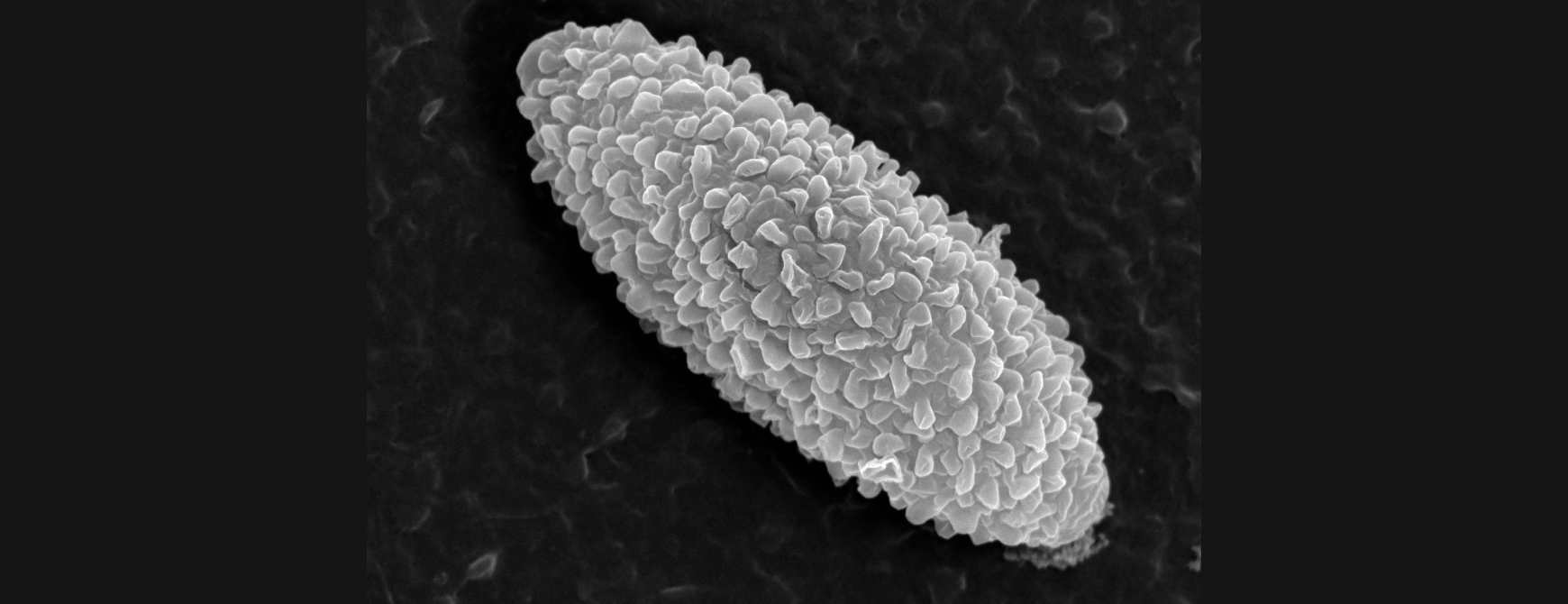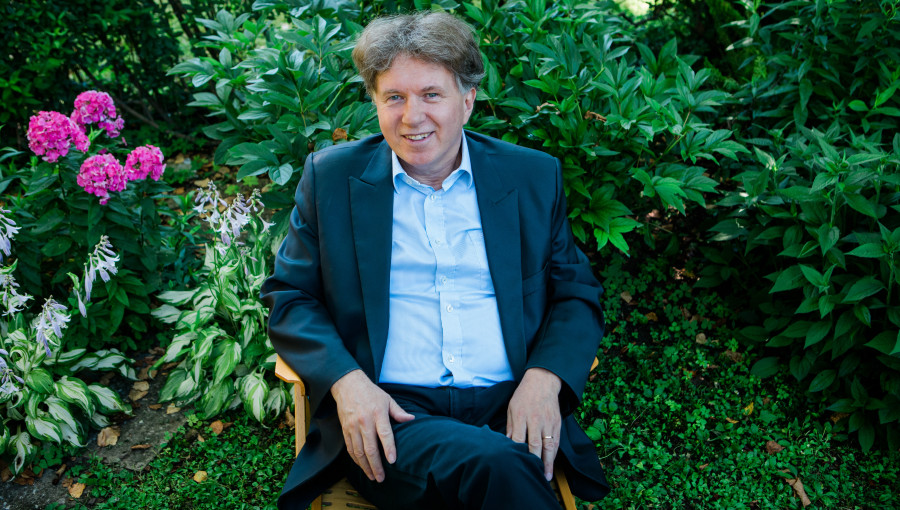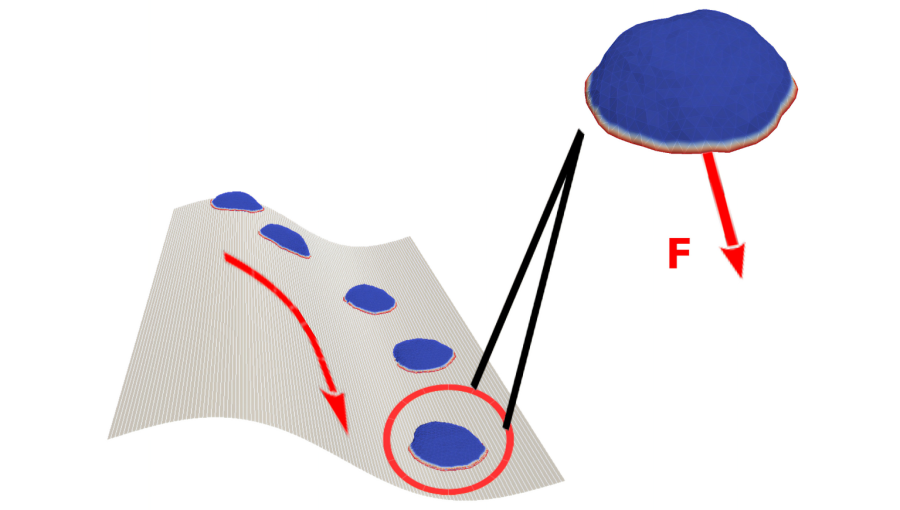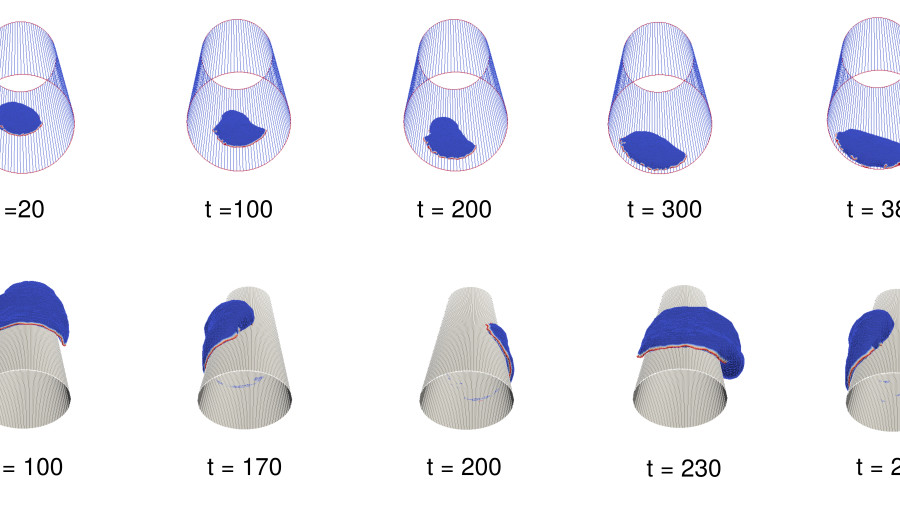With a universal mechanism of cellular movement to new possibilities for treating cancer

UL FE
Date of publication:
Cell migration in the body is a fundamental biological phenomenon. Immune cells constantly search for pathogens throughout the body, while cancer cells migrate, causing metastases. To better understand the migration of immune and cancer cells, researchers, including Assoc. Prof. Dr. Samo Penič and Prof. Dr. Aleš Iglič from the Faculty of Electrical Engineering, University of Ljubljana, have developed a universal physical model of cell movement. This has also paved the way for new possibilities in the treatment of cancer.
The research combined theoretical and experimental studies of cell movement mechanisms on surfaces with locally changing curvature. The theoretical part of the article is based on the use of a Monte Carlo simulation computer program, developed within the research group Laboratory of Physics at the Faculty of Electrical Engineering, University of Ljubljana, led by Prof. Iglič.
It is a relatively new area of research into cellular capability called "curvotaxis," allowing cells to dynamically respond to the locally variable curvature of the substrate on which the cell is located. In the body, we have numerous surfaces with varying curvature, such as blood vessels or cellular protrusions, and this curvature determines the migration behavior of biological cells. In cases where the size of the cells is smaller than the width of elongated grooves, the presented universal theoretical model of cell movement, in line with experiments, predicts that cells preferentially move along the grooves, while avoiding movement along the ridges.
The authors also demonstrated in the study that on a convex tubular structure, cells preferentially move on the surface along a helical trajectory. Conversely, cells move preferentially axially forward or backward on concave surfaces within tubular structures.
The presented theoretical model can, among other things, explain the physical background of effective cellular capture of nanoparticles/pathogens (described in detail at: https://pubs.rsc.org/en/content/articlelanding/2023/sm/d2sm01152b) and the physical mechanism of wrapping cellular membrane protrusions or cells around thin and long tubular structures (fibers) (described in detail at: https://doi.org/10.1038/s41467-023-41273-y).
The presented universal physical mechanism of cell movement is generally valid for various types of migratory cells, as the model's predictions have been experimentally verified using multiple cell types. The published results demonstrate that basic physical principles can determine universal cell behavior even in the complex world of biology, concludes Aleš Iglič.
The universal model of cell movement was published in the prestigious journal Proceedings of the National Academy of Sciences (USA) titled "A minimal physical model for curvotaxis driven by curved protein complexes at the cell's leading edge", PNAS, 121 (12): e2306818121, 2024; https://doi.org/10.1073/pnas.2306818121. The article's authors come from Slovenia, Israel, India, USA, Germany, France, Switzerland, and Belgium.




